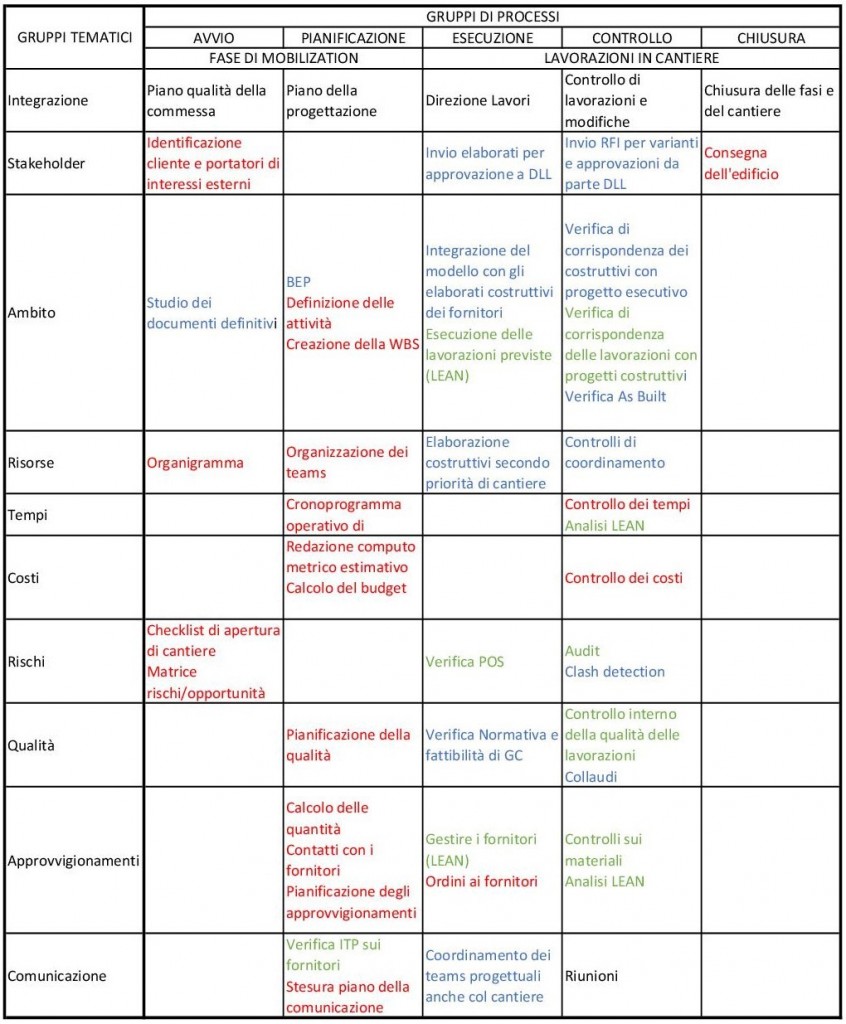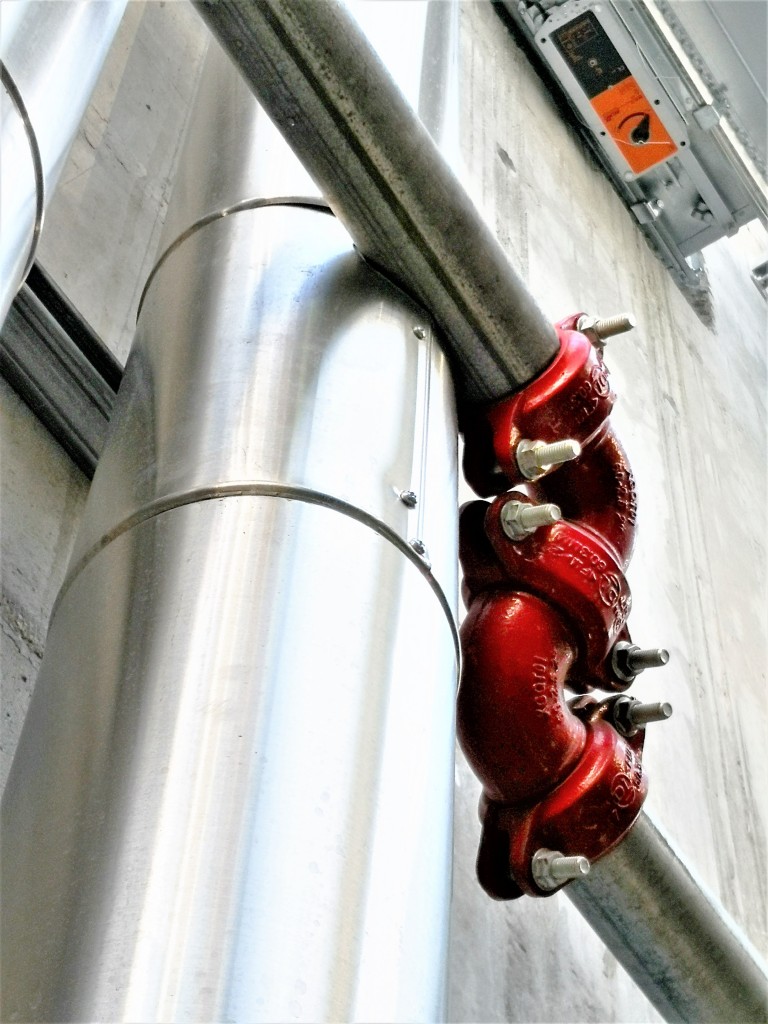AUTHOR: Ing. Salvatore Sammartino
TUTORS: dott.Ing. G. Franchi, dott.ssa M. Guardione, geom. G. Arconi
INTERNSHIP: Colombo Costruzioni Spa
MASTER: Master in “Project management delle opere strutturali e infrastrutturali” a.a 2019/20
Un Progetto è costituito da un insieme di processi che comprendono attività coordinate e controllate, con date di inizio e di fine, realizzate allo scopo di conseguire gli obiettivi del progetto stesso. Per quanto concerne i progetti edilizi, questi hanno come obiettivo ultimo la realizzazione di un manufatto, il fabbricato, unico nel suo genere; pertanto ogni progetto presenta caratteristiche uniche e non sempre riapplicabili a quelli futuri, purtuttavia al loro interno è possibile rintracciare alcuni macroelementi che si ripropongono.Il lavoro di tesi trattato ha avuto come scopo quello di studiare il progetto di costruzione del grattacielo sito in via Melchiorre Gioia 22, soprannominato “la scheggia di vetro”, dal punto di vista del General Contactor presso il quale è stato svolto il periodo di stage, cercando di identificare le interoperabilità tra i tre principali attori in gioco durante il ciclo di vita del progetto. Per far ciò, il percorso progettuale è stato analizzato spaziando all’interno del project management, del lean construction management e del building information management, che rappresentano le tre aree principali di management studiate durante lo svolgimento dello stage: cioè l’area della pianificazione, l’area della produzione e infine quella della progettazione.Si è partiti dalla matrice dei processi, così come definita dalla UNI ISO 21500:2013 e ripresa dal PMBoK, attualizzandola al caso studio: ciò ha comportato l’identificazione univoca dei gruppi tematici per ogni processo, seguendo pedissequamente quanto è stato effettivamente eseguito al fine di raggiungere gli obiettivi del progetto. Questo passaggio è stato fondamentale per mappare il ciclo di vita del progetto e definire quali gruppi tematici sono stati di pertinenza di ognuna delle tre aree di management. Conclusa la mappatura, sono state descritte nel dettaglio tutte le fasi del progetto per ogni gruppo di processo, sia da un punto di vista teorico, cioè come si sarebbero dovute svolgere, che reale di ciò che è stato realmente eseguito, facendo emergere sia i rapporti tra le tre aree che le problematiche intrinseche di ogni azione svolta.

: Processes’matrix actualized to analyse the project of Gioia 22. The three different colours mach the Project management Area (red), the Design Area (blue) and the Operational Area (green).
Alla conclusione del lavoro di studio, sono state analizzate tutte le criticità affiorate e si è cercato di trovare delle soluzioni atte non solo a migliorare il processo produttivo, ma anche a favorire l’interscambio di informazioni tra pianificazione, progettazione e cantiere che, nel panorama moderno sempre più globalizzato e digitalizzato, è richiesto avvenga in maniera sempre più tracciabile, immediata e completa. Si è visto come sia fondamentale la partecipazione e collaborazione già nelle fasi iniziali del progetto, come lo scheduling, non solo del PMO ma anche dei teams progettuali e dei responsabili della parte operativa di cantiere per migliorare la gestione dell’intero progetto durante il suo ciclo vita. In definitiva, rimangono essenziali per la buona riuscita del progetto le capacità tecniche e personali di ogni partecipante alle tre aree di management, tuttavia senza un’adeguata comunicazione e collaborazione tra di loro i rischi potrebbero aumentare notevolmente: a livello progettuale, soprattutto se si seguono le tecniche tradizionali, ci si può accorgere di errori quando è troppo tardi comportando un aumento di tempi e costi; se inoltre la progettazione non si coordina adeguatamente con la parte operativa di cantiere, questa si può trovare sprovvista degli elaborati necessari per eseguire le lavorazioni e ciò può comportare difetti o rilavorazioni; infine il ruolo del project manager è fondamentale per coordinare l’area della progettazione e quella di cantiere, controllare che siano rispettati i tempi, sia delle emissioni delle tavole ad esempio per poter permettere alla parte operativa di procedere con le lavorazioni, che delle lavorazioni stesse. Il lavoro del project manager può essere facilitato da strumenti quali il building information modelling, che permette di tenere sotto controllo tutti gli aspetti progettuali e costruttivi, e il lean construction, che permette di pianificare e coordinare le lavorazioni nel breve periodo agevolando così anche un approccio agile al progetto, strumenti che sono stati peraltro applicati all’interno della commessa di Gioia 22 e approfonditi all’interno dell’elaborato di tesi.

One of a possible problem (clash) that could occur during the project due to lack of coordination between the designers and the operational area.
Tutto il lavoro svolto, infine, ha avuto come obiettivo quello di poter costituire una “lesson learned” utile a migliorare i processi di pianificazione, progettazione e produzione per arrivare all’ottimizzazione del progetto sotto l’aspetto della triade tempi-costi-qualità, seguendo una visione olistica in cui le tre aree non possono e non devono agire indipendentemente l’una dall’altra, ma collaborare secondo un rapporto di interdipendenza quanto più orizzontale possibile.
FOR FOREIGN STUDENTS:
A project is made up of many processes, which include a set of coordinated and controlled activities that have a specified start and end; the scope of work of these activities consist of achieving the project’s goals.
Construction project are aimed at the production of an unique product which is the building; therefore every project has its own unique characteristics, which differ one project to the next. However, it is possible to highlight some macroscopic and recurring features among different building projects.
The aim of this thesis work is to analyse the construction project of the skyscraper in Melchiorre Gioia street in Milan from the point of view of the General Contractor, where the author conducted his internship. The work focuses on detecting the interoperabilities between the three major stakeholders involved in the project’s life-cycle. To achieve this goal, it was be necessary to look closely at the project path ranging from project management, lean construction management and building information management, which represent the three most significant management areas within the construction site: these are namely the areas of planning, production and the design.
The exposition began with the processes matrix as defined by the UNI ISO 21500:2013 and the Guide to Project Management Book of Knowledge, updated to fit the case study. This resulted in identifying the groups of processes related to the actual life cycle of the project. This step was necessary to chart the project’s life cycle and to place the groups on the correct management area. All the project milestones were looked at for each group after the mapping. This description has been discussed theoretically at the beginning, i.e. looking at the theoretical steps that should have taken place, and then how they were actually performed; through this it was possible to draw out the links between the three management areas and the underlying problems of every action.
At the end of the study, all the critical issues emerging during the internship were analysed to identify solutions aimed at improving the production process and at promoting the exchange of information scheduling, drawing and site construction; nowadays, this last task is becoming increasingly more important due to an increasingly globalised and digitized the modern scenario, which requires a certain level of traceability, simultaneity and exhaustive completeness of the data.
It is clear that the role of non only the PMO but of the drawing teams and the site manager at the beginning of a project is to improve the management of the project during its life-cycle.
The technical and personal skills of every person involved with the project are crucial for the success of the project. However, without proper communication and collaboration between these stakeholders, the probability of encountering risks increase: if we use the traditional method, errors are identified too late, causing delays and wastes of money. These could be caused by the lack of coordination between the project team and the site team because it can cause the loss of data and reworking, too. In short, the project manager has an important role in coordinating the project area with the site’s and in ensuring that there aren’t delays that can compromise the beginning of the work.
The work of the project manager can be simplified by some items such as building information modelling, which enables them to monitor all the design and construction aspects, and by lean construction, which allows him to plan and organize the workings in the short timeframe.
To conclude, the essay has focused on setting up an After Action Review to enhance the processes of planning, design and production and to optimize the project, complying with the times-costs-quality triad and with a holistic view of the construction project in which the three areas must cooperate instead of acting independently of each other.

